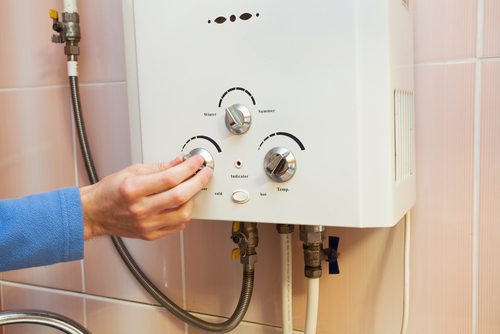Simple Guide to Maintaining Your Home's Hot Water SystemImportant Maintenance Techniques for Your Home's Hot Water SystemProfessional Guidance for Caring for Your Home's Hot Water System
Simple Guide to Maintaining Your Home's Hot Water SystemImportant Maintenance Techniques for Your Home's Hot Water SystemProfessional Guidance for Caring for Your Home's Hot Water System
Blog Article
This post underneath about How to Maintain Your Water Heater & Prolong its Life is immensely entertaining. Don't bypass it.

Warm water is important for everyday convenience, whether it's for a revitalizing shower or washing meals. To guarantee your warm water system runs efficiently and lasts longer, routine upkeep is vital. This article offers functional pointers and understandings on how to maintain your home's hot water system to prevent interruptions and pricey repairs.
Introduction
Maintaining your home's hot water system may seem complicated, yet with a couple of basic actions, you can guarantee it operates smoothly for years ahead. This guide covers every little thing from comprehending your warm water system to do it yourself upkeep pointers and recognizing when to hire professional help.
Significance of Maintaining Your Hot Water System
Regular upkeep not just extends the lifespan of your warm water system yet also guarantees it runs successfully. Ignoring upkeep can cause reduced efficiency, higher power costs, and even premature failing of the system.
Indications Your Hot Water System Needs Upkeep
Understanding when your hot water system needs focus can prevent significant problems. Look out for signs such as irregular water temperature, unusual sounds from the heating system, or rustic water.
Purging the Water Heater
Purging your water heater gets rid of debris buildup, improving efficiency and prolonging its life.
Monitoring and Replacing Anode Rods
Anode poles stop rust inside the container. Checking and replacing them when broken is important.
Complex Problems Needing Specialist Help
Examples consist of major leakages, electric troubles, or if your hot water heater is regularly underperforming.
Regular Specialist Upkeep Advantages
Specialist upkeep can consist of extensive evaluations, tune-ups, and guaranteeing conformity with security requirements.
Inspecting and Changing Temperature Settings
Readjusting the temperature setups ensures optimum performance and safety and security.
DIY Tips for Upkeep
You can perform a number of upkeep tasks on your own to keep your warm water system in top condition.
Looking for Leaks
On a regular basis inspect pipelines and connections for leakages, as these can bring about water damage and higher costs.
Understanding Your Hot Water System
Before diving right into maintenance jobs, it's helpful to comprehend the standard components of your hot water system. Generally, this consists of the hot water heater itself, pipes, anode rods, and temperature level controls.
Month-to-month Maintenance Tasks
Normal monthly checks can help capture minor issues before they rise.
Examining Stress Alleviation Valves
Testing the pressure relief valve guarantees it operates appropriately and prevents extreme stress buildup.
Protecting Pipelines
Protecting hot water pipes decreases heat loss and can save energy.
When to Call an Expert
While DIY maintenance is helpful, some concerns call for professional know-how.
Verdict
Normal upkeep of your home's warm water system is essential for efficiency, longevity, and cost savings. By complying with these ideas and understanding when to seek professional aid, you can make certain a reputable supply of hot water without unexpected disruptions.
Water Heater Maintenance Tips
Test the TPR Valve
Shut off the power and the cold-water supply valve. Place a bucket under the pipe connected to the temperature-pressure-release (TPR) valve on the top or side of the tank. (This valve opens if the tank pressure gets too high.) Lift the valve’s tab to let some water out, then let go. If water keeps flowing, drain the tank partway, unscrew the old valve with a pipe wrench, and install a new one. Check the Anode Rod
Put a hose to the tank’s drain cock and let out a few gallons of water. Now fit a 1 1/16-inch socket onto the rod’s hex head on top of the heater (or under its top plate) and unscrew the rod. If it’s less than ½ inch thick or coated with calcium, buy a new one, wrap its threads with Teflon tape, put it back in the tank, and tighten securely. Use this segmented rod if headroom above the tank is limited. Drain the Tank and Wash Out Sediment
Drain the remaining water in the tank into the bucket, then stir up the sediment on the tank’s bottom by briefly opening the cold-water supply valve. Drain and repeat until clean water comes out of the hose. Close the drain cock, refill the tank, and turn its power back on. Adjust the Temperature
Find the temperature dial on the side of the tank and unscrew its cover. Adjust the dial to 120 degrees using a flathead screwdriver. For every 10 degrees the temperature is lowered, you can expect to save up to 5 percent in energy costs. Turn the water heater off or the thermostat down to its lowest setting if you plan to be away from home for more than three days. Insulate the Pipes
Buy some self-sticking 3/8-inch-thick foam pipe insulation that matches the pipes’ diameter. Slide the foam over the hot-and cold-water pipes as far as you can reach. Insulating the cold-water pipe prevents condensation in summer. Peel the tape and squeeze the insulation closed. If the pipe is 6 inches or less from the flue, cover it with 1-inch-thick unfaced fiberglass pipe wrap. https://www.thisoldhouse.com/plumbing/21016402/how-to-maintain-a-water-heater

We had been brought to that article on Water Heater Maintenance Tips You Can't Afford to Forget from someone on our other web blog. For those who enjoyed our article please don't forget to pass it around. Thanks for being here. Don't hesitate to come by our website back soon.
At This Website Report this page